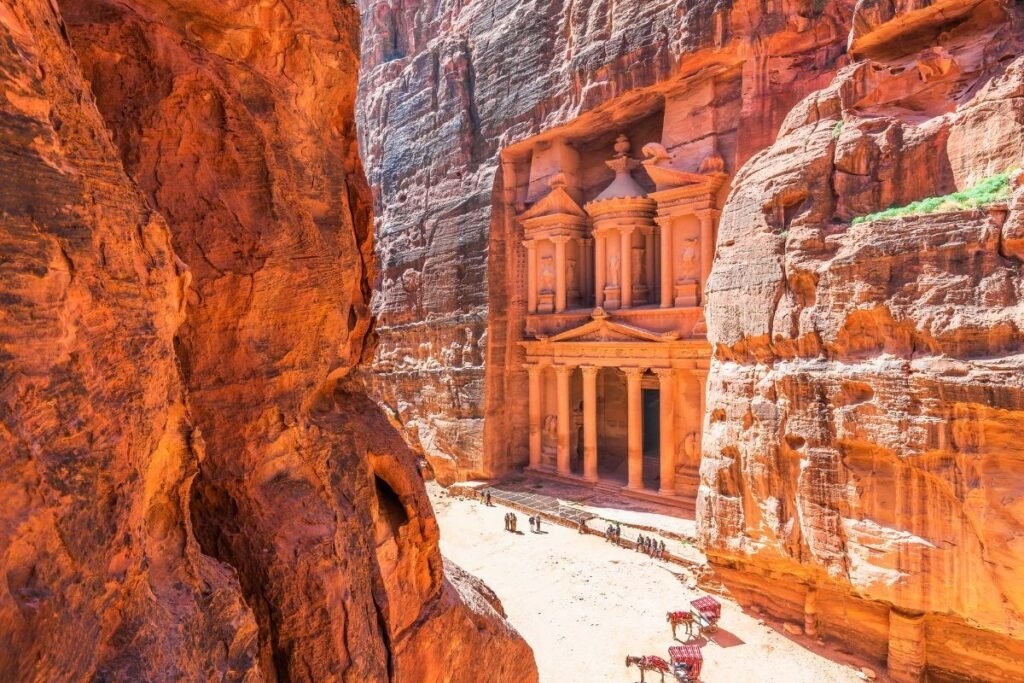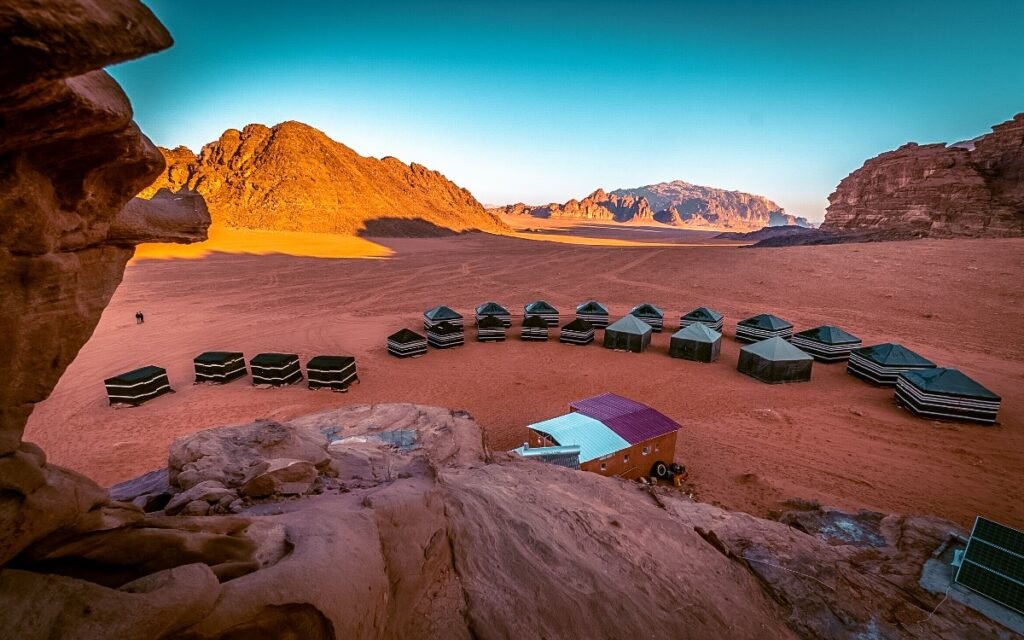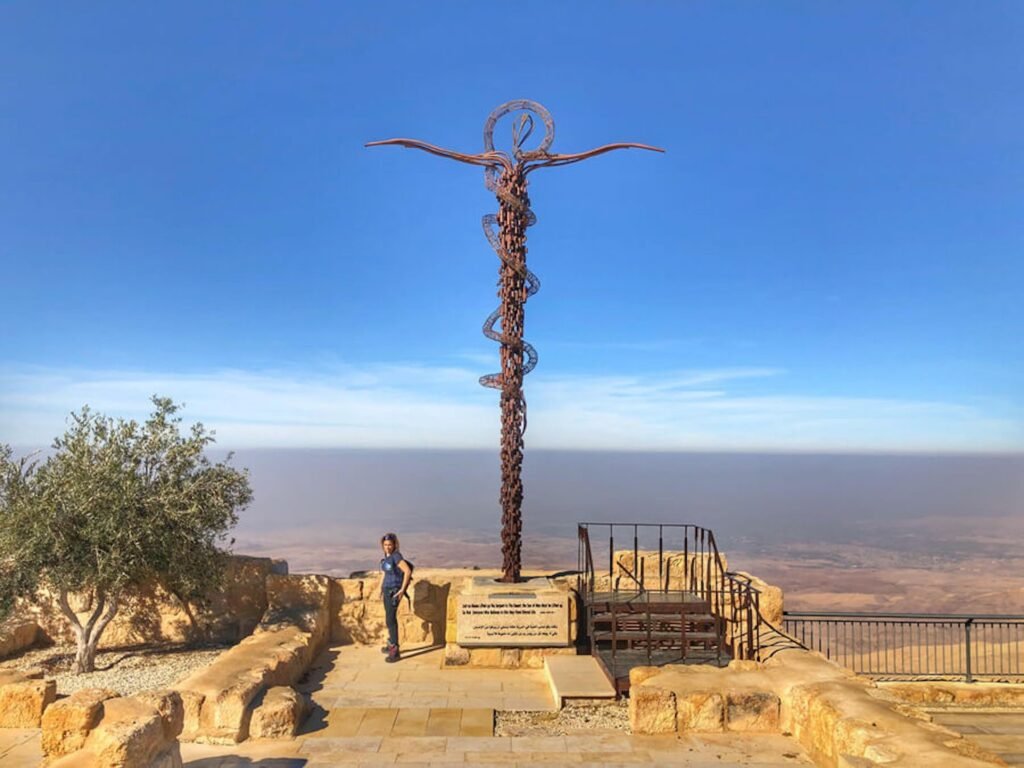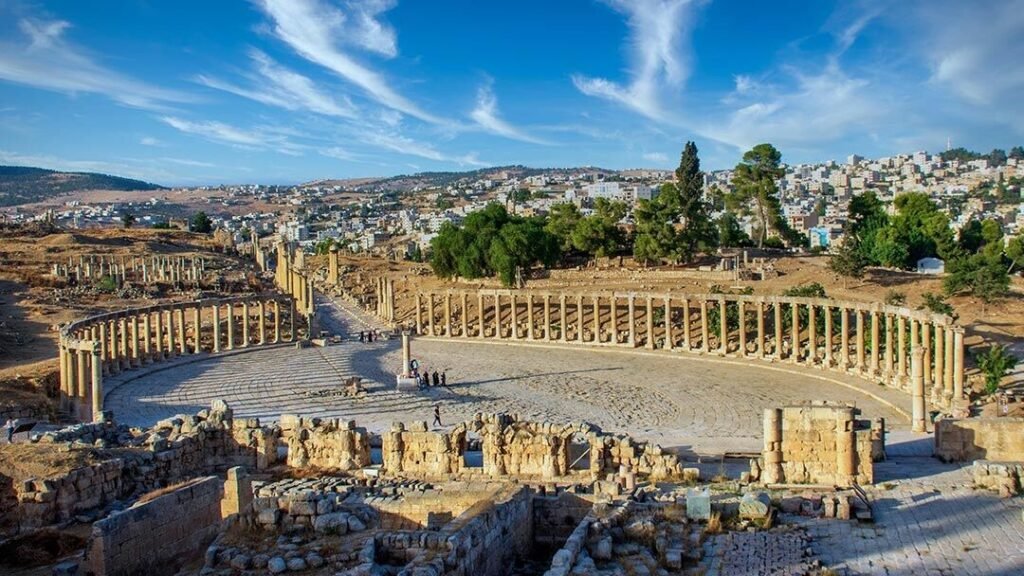About Jordan
The Hashemite Kingdom Of Jordan
An Arab Muslim country, located in the north of the Arabian Peninsula and in West Asia. Bordered by Syria to the north, Iraq to the east, Saudi Arabia to the south and south-east, and Palestine (the West Bank) to the west it is located at 31 00 N, 36 00 E.
Jordan is named to the Jordan River, which passes on its western border, and Amman is the capital.
Climate and Clothing
Jordan has a mild climate with no extreme of hot or cold (spring weather) during the congress period. Generally, Jordan’s climate and geography divides naturally into three regions: desert on the Eastern Bank, Heights East (warm and dry summers and mild, rainy winters and some snow) and Jordan Valley. The annual temperature averages between 12-15°C (59-77°F) up to a summer high of 28-36°C in desert regions. Average rainfall is of 50 mm (1.97 inches) a year in the desert to 800 mm (31.5 inches) in the northern highlands. Snow falls at intervals mostly in the Northern, Central and Southern Highlands and can be very heavy at times.
Jordan benefits from a diversity of geographical characteristics, from the river basin valley in the west to the desert in the east with some small hills and highlands. The lowest point is the Dead Sea: -408m (1338.6 ft) highest point: Jabal Rum, 1734 meters (5689thft). Jordan generally lacks freshwater sources. The river Jordan, the longest river in the country has reached low levels in recent decades.
Passport/Visa
Visitors must hold a passport or travel document with a minimum validity of six months beyond the visiting period. Most nationalities do not need visas for social/business visits.
You can get visa from embassy of Jordan in your country as some nationalities must obtain visas before travelling and some can obtain a visa from the Queen Alia International airport upon arrival.
For more information, visit the link below:
https://moi.gov.jo/EN/Pages/Visa_E_Applications
Currency
1 US Dollar is equivalent to 0.708 Jordan Dinar. Hotels will exchange money at all hours.
Tipping and Taxis
Tipping is not common practice in Jordan. Most hotels and large restaurants already include a 10% service charge and 16% government tax in their bills, so there is no need for tips and it’s your choice.
Taxis:
Taxis (Yellow) are inexpensive inside the city and often the most convenient form of transportation in Jordan. The white – painted (service taxis) offer transportation between fixed routes and are to be shared with other passengers. Private yellow taxis; can be taken from ranks outside larger hotels or hailed on the street.
Taxis drivers are friendly and usually speak some English.
Tipping is not included in the fare, whereas transportation of luggage comes extra if strapped to the outside of the taxi, or if carried several floors.
Bank Hours
Banking hours are generally from Sunday – Thursday 8:30 – 15:00, Friday and Saturday: Closed
Food
You will discover, among others, our traditional dish, which is called Mansaf. A choice of Mediterranean and Continental dishes will also be available. Jordanian Kitchen is very rich of Varieties
Language
While Arabic is the official language in Jordan, English is also widely spoken.
The following list of useful phrases should help you get started with your introduction to the Arabic language as it is spoken in Jordan.
Hello : marhaba
Good bye : ma’asalamah
My name is : isme
What is your name? : shoo ismak?
Thank you : shokran
Please :law-samaht /men fadlak
Excuse me : an iznak
What time is ? addash el sa’aa?
How much does this cost ? bikaam-hatha?
Medical Services
Private clinics and hospitals with international standards are available at very reasonable costs.
Doctor and Medical assistant are available at the congress location and duration.
Weights and Measures
The metric system is used.
Voltage
Voltage is 220-240 volts AC at 50 cycles/sec. Standard 3-pin square plugs and sockets.
More Information
For more information on Jordan, its people and culture, please visit: www.visitjordan.com
- Petra & Wadi Rum- More Than a Wonder
The major tourist attractions historical site, the worldwide famous Petra (UNESCO World Heritage Site since 1985, and one of New Seven Wonders of the World).
The city of Petra, capital of the Nabataean Arabs, is one of the most famous archaeological sites in the world, it is Located 240 km south of the capital Amman and 120 km north of the red sea town of Aqaba, Petra the world wonder, is undoubtedly Jordan’s most valuable treasure and greatest tourist attraction, and it is visited by tourists from all over the world.
It is not known precisely when Petra was built, but the city began to prosper as the capital of the Nabataean Empire from the 1st century BC, which grew rich through trade in frankincense, myrrh, and spices.
Petra was later annexed to the Roman Empire and continued to thrive until a large earthquake in 363 AD destroyed much of the city in the 4th century AD.
Experience the incredible sights of Jordan in a single, action-packed day tour. This adventure allows travelers the ability to explore two of the world’s most awe-inspiring destinations. Embark on a journey that begins at Jordan’s crown jewel, the legendary “lost city” of Petra. As one of the Seven Wonders of the World, Petra unveils a millennia-old Nabatean city, perfectly preserved beneath layers of sand until its rediscovery just 200-years ago. Wander through Petra’s intricate rock-cut architecture, marvel at the iconic Treasury, and immerse yourself in the rich history that emanates from every ancient stone, you can visit the altar or the monastery and to reach one of those sites you should start early in the morning to save time for visiting one or both. And you can start at the beginning of your tour look over the mountains on the treasury and then go to the altar then through the valley an opportunity to see the girl palace and return of the altar or go down via the stairs to the royal tombs.
Continue on to the mesmerizing landscapes of Wadi Rum. Prepare to be captivated by the majestic desert scenery, with its towering sandstone cliffs, dramatic rock formations, and vast golden dunes. Experience the timeless beauty of this UNESCO World Heritage Site as you venture deep into the heart of Wadi Rum, immersing yourself in its otherworldly tranquility and Bedouin culture.


- Jordan River– Baptismal Site
Take a tour: https://www.youtube.com/watch?v=WsnnJNUFiuY
As soon as Jesus was baptized, he went up out of the water. At that moment heaven was opened, and he saw the Spirit of God descending like a dove and lighting on him…” (Matthew 3:16-17)
Situated on the eastern bank of the River Jordan, nine kilometres north of the Dead Sea, the archaeological site consists of two distinct areas: Tell Al-Kharrar, also known as Jabal Mar-Elias (Elijah’s Hill) and the area of the churches of Saint John the Baptist near the river. Situated in a pristine natural environment the site is believed to be the location where Jesus of Nazareth was baptized by John the Baptist. It features Roman and Byzantine remains including churches and chapels, a monastery, caves that have been used by hermits and pools in which baptisms were celebrated, testifying to the religious character of the place. The site is a Christian place of pilgrimage.

It is an elevated ridge, approximately 700 meters (2,300 ft) above sea level. Part of the Abarim mountain range, Mount Nebo is mentioned in the Bible as the place where Moses was granted a view of the Promised Land before his death. The view from the summit provides a panorama of the West Bank across the Jordan River valley. The city of Jericho is usually visible from the summit, as is Jerusalem on a very clear day. The biblical town of Nebo, now known as Khirbet al-Mukhayyat, is located 3.5 km away.
Mount Nebo is steeped in religious significance as it is believed to be the place where Moses stood to view the Promised Land before his death. According to the Book of Deuteronomy, Moses died on Mount Nebo and was buried in Moab. In the 4th century, a small monastery was built by Egyptian monks on the mountain peak in memory of Moses, now called Memorial Church of Moses. After its reconstruction in the 5th century, the Memorial Church was turned into a basilica and still stands on the zenith of Mount Nebo today.
The brilliant Byzantine mosaic remnants that can also be found here have undergone a restorative process to depict the entire route of the King’s Highway – an ancient trade route running through Jordan. Pieced together, the incredible collection showcases a variety of images including wildlife and local customs from the Byzantine era.

- Jerash- Gerasa
It is famous for its ancient Roman architecture, with colonnaded streets, Corinthian arches, outdoor Roman Theaters and the Oval Plaza.
Jerash is the capital and the largest city of the Jerash Governorate in Jordan, but in ancient times it was one of the wealthiest and most cosmopolitan cities in the ancient Near East.
Highlights of ancient Gerasa
- Hadrian’s Arch
- Hippodrome and Church of Marianos
- The South Gate
- Sanctuary of Zeus Olympios
- Oval Plaza
- The South Theater
- Cardo, Umayyad/Abbassid Mosque, Tetrakionion, South Decumanus.
- Cathedral Complex
- The Sanctuary of Artemis
- Birketein
- Birketein

